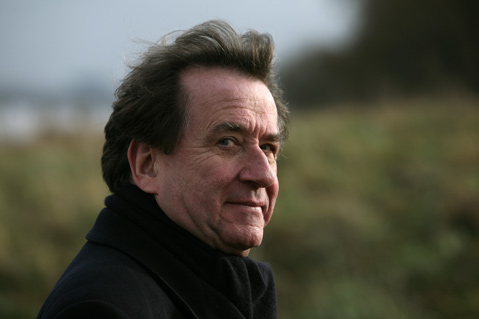Dresden Staatskapelle at the Granada
CAMA Presents Dresden’s Symphony Orchestra

The German/Austrian approach to classical music remains in many ways the single most rigorous example of a continuous performance tradition in all of western culture. Current performers who were trained by living masters connect with their teacher’s teachers on back all the way through Beethoven to Mozart to Bach, and beyond.
The Dresden Staatskapelle, which will play at the Granada on Tuesday, October 26, as the first concert in this season’s CAMA (Community Arts Music Association) International series, was founded in 1548 and has been closely associated with several of the world’s most revered composers, including Richard Wagner, who served as the ensemble’s music director, and Richard Strauss.
Although he is a good 400 years younger than the 462-year-old orchestra with which he will appear, pianist Rudolf Buchbinder wears a similar mantle of longstanding authority and expertise. One of the most distinguished interpreters of the Viennese school, Buchbinder specializes in comprehensive projects, having issued more than 100 recordings, including complete sets of the Beethoven piano sonatas and variations, all of Joseph Haydn’s piano music, and all of Mozart’s piano concertos, the latter recorded live, as Buchbinder prefers to do, with the Vienna Philharmonic. In addition to his extensive schedule as a performer, Buchbinder also directs the annual Grafenegg Music Festival, Austria’s most ambitious new cultural initiative in this century. I spoke with Buchbinder by phone from his home in Vienna.
I know that you collect manuscripts and facsimiles, and that you will be performing the Piano Concerto No. 1 in A Minor of Robert Schumann. Is this a piece for which you have the original score in your collection? What can you say about the way in which it was composed? I have the original score, yes. It was composed in one movement, but then he was forced to compose two more movements. It’s a perennial problem of the Romantics. You see it also in Tchaikovsky. The first movement is magnificent, and then everything that follows is just an encore. Look at Schubert’s piano sonatas; the first movements are heaven.
How would you characterize the relationship between the soloist and the orchestra in this work? In all concertos, the relationship is somewhat similar, because the word concerto originally means “fight.” The fight between the solo instrument and the orchestra—it’s always like this. And nobody should be the loser, as well. It’s always a kind of partnership. I don’t want to be accompanied by an orchestra, and I have never accompanied a singer or a violin player. The only person I accompany is my wife when we go out to dinner.
How do you understand the role of the pianist in contemporary musical performance? For me, the objective is to keep the good traditions and to discard the bad ones. We have to restore the performance of these works to something that reflects the original intention of the composer. This is why I consult the manuscripts, because I am always working to discover the right tempo and the right approach.
The Grafenegg Music Festival sounds wonderful. What was it like this time? We had a wonderful year, with the Vienna Philharmonic, the Sydney Symphony Orchestra, and of course the Dresden Staatskapelle. Renée Fleming told me that she thinks it [the Wolkenturm amphitheater, a modern outdoor venue that opened in 2007] is the best open-air amphitheater for classical music in the world. This is because it is very intimate for an outdoor venue—only 1,730 seats—and because of the extraordinary acoustics.
4•1•1
CAMA presents the Dresden Staatskapelle with Daniel Harding, conductor, and Rudolf Buchbinder, piano, at the Granada on Tuesday, October 26. For tickets and information, call 966-4324 (CAMA) or 899-2222 (Granada), or visit camasb.org.



